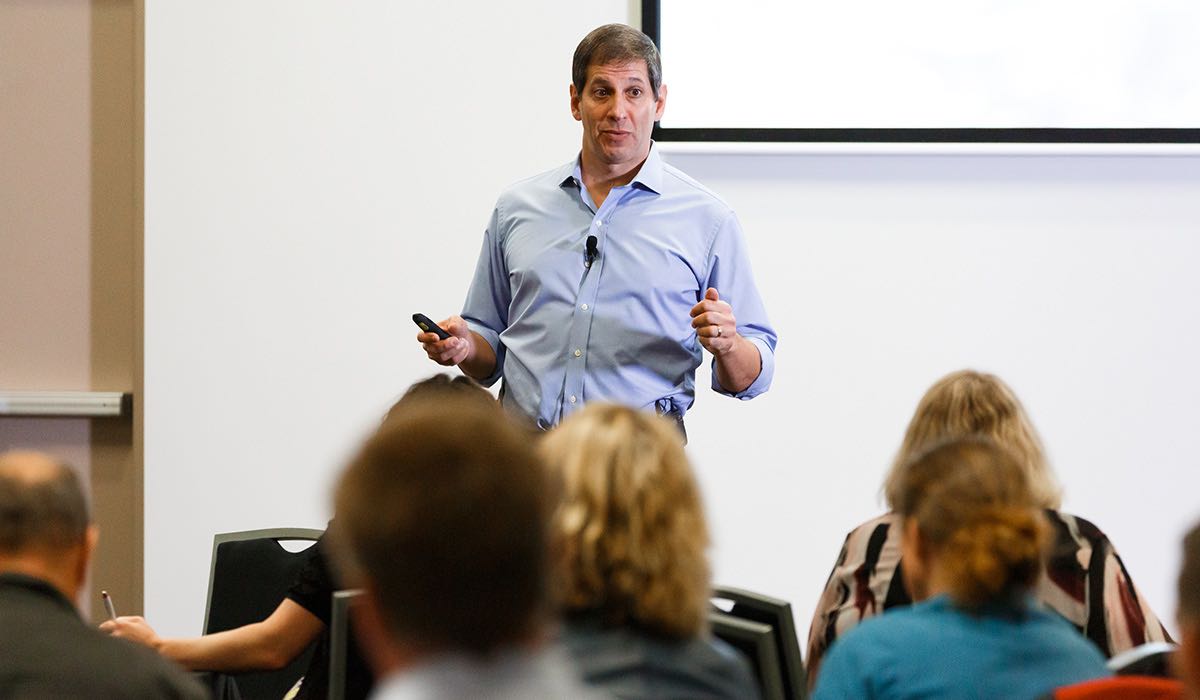We all know that moment at a social gathering, there’s a slight lull in the conversation before someone turns to you and asks, “What do you do?” While it is a common enough question, it can prove to be a stumper every time, particularly if you work in the realm of tech, science or engineering.
“I train engineers,” I used to respond. The questioner would often look at me with confusion, and might half-heartedly ask, “You’re an engineer for trains?”
Attempting to recover, I’d try a slightly elongated response about how I onboard technicians and engineers on their first few weeks of a job at a new manufacturing corporation. Unfortunately, the typical result was either boring my audience or sounding like an intellectual elitist. After experiencing both reactions on numerous occasions, I never could determine which was worse, but suffice it to say they both were bad.
This is why Mark Bayer captured my attention when we were recently introduced. Mark is the President of Bayer Strategic Consulting, and he helps his clients make their work more relatable and accessible. It could be for strategic reasons, like gaining funding for an upcoming project, or to help gain traction in their field by building relationships. But I was hoping for some insights to use in everyday life, as well. Mark was kind enough to share a couple of the points that he would normally give during one of his workshops or online courses. So here is our little sampling of “How to be relatable 101.”
Research Your Audience
All right, as tech people, research is our bread and butter. Let’s take these skills off the desktop and apply them to people. If possible, it is helpful to get an inside scoop as to what knowledge base your audience has. Of course, at a social gathering this could be tricky. However, if it was a presentation for college students, then talking to the professor or previous guest speakers could provide beneficial insight. Making your information engaging and accessible means that sometimes you have to translate the tech talk. Find out what jargon is useful and what words will result in glazed eyes. When your audience looks at the data what will they be able to extrapolate by themselves? What aspects of your information is relevant to their lives, because if you can’t form some sort of connection with your audience, then they won’t be your audience for long. And speaking of connections, after you do your preemptive research…
Create a Conduit
Mark also noted that we experience a negative visceral reaction when encountering the unknown or something we can’t understand. It’s our old survival instincts kicking in. The end result is, without some sort of connection, walls are promptly built and moving forward with the dialogue can be a struggle. He offered two examples of how we can bridge that gap:
- A Liaison: One option is to channel someone else’s credentials. An example of this would be when a high-level state or national politician walks on the stage and says, “I am so glad to be here with my good friend, <insert local politician>.” Odds are that the two of them probably only met about five minutes ago before they walked onto the stage. However, a connection has been made between the politician and this community by the affirmation of this connection. The door is opened, and the politician is now, perhaps not one of the community, but also no longer an outsider.
- Personal connection: Mark’s second example was more specific. An Ohio State University student tracked birds as part of her graduate program, and, during the course of her work, she would sometimes unintentionally cross over onto private property. More than once this led to local farmers who approached, sometimes with guns in hands, to investigate why a stranger was trespassing on their property. Shockingly, discussions about documenting wildlife weren’t exactly a bridge builder in those situations. However, she did discover a connection that defused the situation quickly. She put Ohio State football magnets on her car, wore Ohio State paraphernalia, and as soon as possible mentioned her school and football. That’s right… Ohio State football was her saving grace. She started with football as a conduit to talk about her school and, finally, her research. It was so effective that some farmers would even reach out to her and tell her where on her property she could find the birds she wanted. Go Bucks!
The fact is, with so many voices out there, you have to give people a reason to listen to yours. Often, as techies, we’re prone to saying that the data speaks for itself. False, you can speak… your data cannot. And if you’re a lazy communicator, people are less likely to invest the time to ingest and understand the data. We’re barraged with ridiculous amounts of content every day. Here are just a few stats:
- 300 hours of videos are uploaded to YouTube every minute
- According to Marketing Firm Yankelovich, we’re exposed to 5,000 ads every day
- 95 million pics and photos are shared on Instagram every day
Pickiness isn’t laziness, it’s a practical reaction when being swamped with data on the daily. So, whether it’s escaping the next dinner party unscathed, gaining funding for your research, or building your influence in your field, if you tap into these tips and some practice you too can catch your audience: hook, line, and sinker.
Jacquelyn Adams is a career development enthusiast and an award-winning CEO. She lives in a world of constant exploration, whether it’s summiting Mount Kilimanjaro, delving into more effective employee training strategies… or discovering how she’d do in a chocolate eating contest (answer: last place). Find more of her Lessons on Leadership articles here or connect with her on LinkedIn here.
